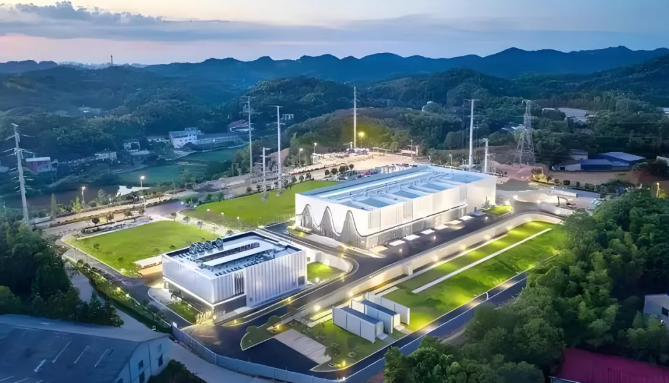On July 13, construction crews worked amid the roar of machinery at the northeastern section of Shahe Second Road in the Nylon New Materials Development Zone. Workers busily tied rebar and poured concrete as the 100MW/400MWh all-vanadium flow battery energy storage station—a core project of China Nylon City’s integrated source-grid-load-storage system—advanced steadily.
The Nylon New Materials Development Zone is one of Henan Province’s first seven pilot sites for incremental power distribution reform featuring integrated source-grid-load-storage systems. With China Nylon City’s rapid development, establishing a stable and efficient new power system has become imperative. The 2024 municipal government work report emphasized “vigorously promoting integrated source-grid-load-storage projects” to enhance the nylon hub’s innovation capacity and reduce energy costs for park enterprises—central objectives of this initiative.

The station employs advanced vanadium flow battery technology developed by the Dalian Institute of Chemical Physics, Chinese Academy of Sciences. Unlike traditional lithium batteries, it fundamentally eliminates thermal runaway risks and offers a 25-year calendar life with zero degradation through 16,000 ultra-long cycles. Operating safely at room temperature and pressure, these batteries withstand deep charge-discharge cycles without damage, perfectly aligning with chemical industrial parks’ requirements for long-duration, high-capacity, and ultra-safe energy storage.
Leveraging an intelligent microgrid control system, the station will implement precise “source-grid-load-storage” coordination strategies for China Nylon City. It will absorb surplus green power from distributed photovoltaic projects during daytime, storing 400MWh in vanadium flow battery systems, and discharge electricity at night, during cloudy/rainy periods, or peak grid pricing hours for “peak shaving and valley filling.” Upon full operation, its annual discharge capacity is projected to reach 200 million kWh.
Prioritizing quality construction, the construction team has maintained millimeter-level precision in equipment foundation positioning to ensure seamless installation of storage unit containers. The station is scheduled for full commissioning by year-end. Operating through an innovative “independent shared storage + incremental distribution network” model with smart controls, it will absorb daytime surplus green energy and discharge clean power during production peaks. This will optimize electricity costs for the operational 110kV Nylon Substation—China’s first incremental distribution grid—benefiting all park enterprises.
Looking ahead, the station’s annual output of 200 million kWh of clean electricity will profoundly reshape China Nylon City’s energy structure while providing a replicable and scalable “Pingdingshan Solution” for green, low-carbon transformation of energy-intensive industrial parks nationwide.


